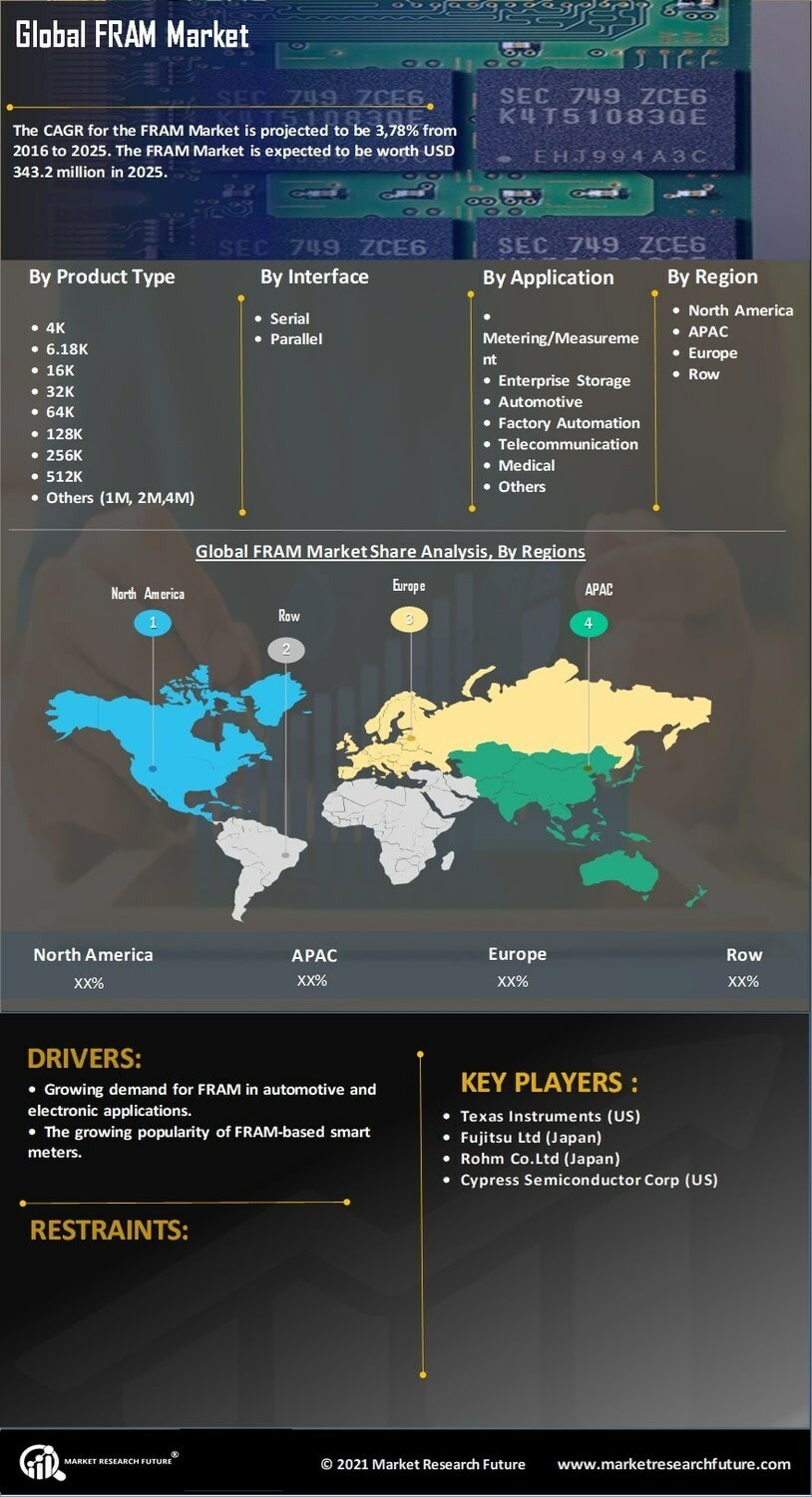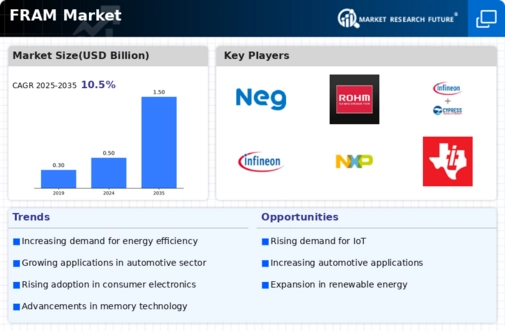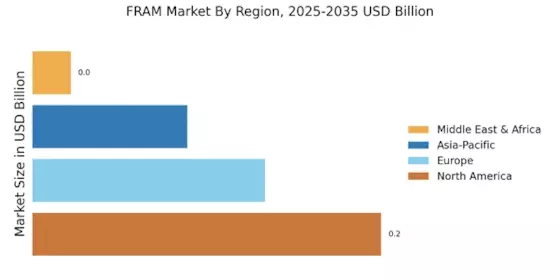Sustainability Focus in FRAM Market
Sustainability has emerged as a pivotal driver in the FRAM Market, as manufacturers and consumers alike prioritize environmentally friendly solutions. The production of FRAM Market devices typically involves fewer hazardous materials compared to traditional memory technologies, aligning with global sustainability goals. Furthermore, the energy efficiency of FRAM Market contributes to reduced carbon footprints in electronic devices. Market analysis indicates that companies emphasizing sustainable practices are likely to capture a larger share of the FRAM Market, as consumers increasingly favor eco-friendly products. This focus on sustainability is expected to shape the future landscape of the FRAM Market.
Technological Advancements in FRAM Market
The FRAM Market is currently experiencing a surge in technological advancements that enhance the performance and efficiency of ferroelectric random access memory (FRAM Market) devices. Innovations in manufacturing processes and materials are leading to improved data retention and faster access times. For instance, the integration of advanced semiconductor technologies is enabling the production of smaller, more efficient FRAM Market chips. This trend is reflected in the increasing adoption of FRAM Market in various applications, including automotive electronics and smart devices. As a result, the market is projected to grow at a compound annual growth rate (CAGR) of approximately 10% over the next five years, driven by these technological improvements.
Rising Adoption of Smart Devices in FRAM Market
The surge in smart device adoption is significantly impacting the FRAM Market. As consumers increasingly embrace smart home technologies, wearables, and other connected devices, the demand for efficient memory solutions is on the rise. FRAM Market's ability to retain data without power and its fast write speeds make it an attractive option for manufacturers of smart devices. Market projections indicate that the smart device segment will contribute substantially to the overall growth of the FRAM Market, with an expected increase in demand of around 12% annually over the next few years.
Expansion of Automotive Electronics in FRAM Market
The automotive sector is undergoing a transformation, with an increasing reliance on advanced electronics for safety, navigation, and entertainment systems. This shift is propelling the demand for FRAM Market in the automotive industry, where its durability and reliability are paramount. Recent statistics suggest that the automotive segment could account for nearly 30% of the total FRAM Market by 2026. As vehicles become more connected and autonomous, the need for robust memory solutions like FRAM Market is likely to intensify, driving further growth in this segment.
Growing Demand in IoT Applications within FRAM Market
The proliferation of Internet of Things (IoT) devices is significantly influencing the FRAM Market. As more devices become interconnected, the need for reliable and efficient memory solutions has escalated. FRAM Market's unique characteristics, such as low power consumption and high endurance, make it particularly suitable for IoT applications. According to recent data, the demand for FRAM Market in IoT devices is expected to increase by over 15% annually, as manufacturers seek to enhance device performance while minimizing energy usage. This growing trend underscores the importance of FRAM Market technology in supporting the expanding IoT ecosystem.















Leave a Comment